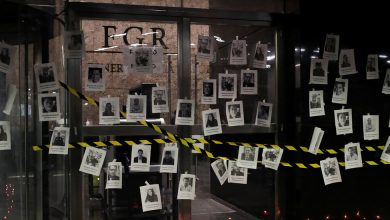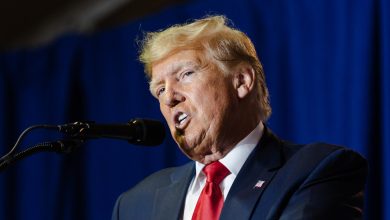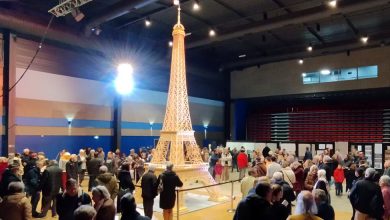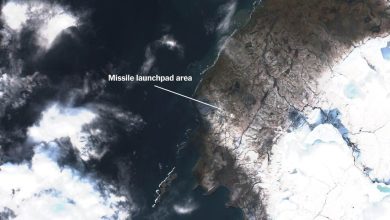Death Toll in Peru Protests Rises as New Leader Struggles for Control
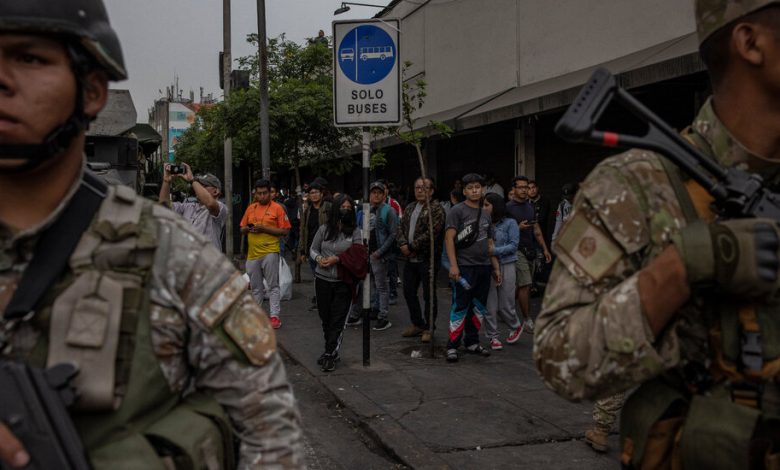
LIMA, Peru — The death toll in protests that have convulsed Peru rose above 20 on Friday, with tensions centered in the highland city of Ayacucho, where eight people were killed in clashes between anti-government demonstrators and military officers.
The demonstrations and ensuing violence have hampered efforts by the new president, Dina Boluarte, to establish control over the country, with two ministers in her government resigning on Friday and protesters in the streets chanting “Dina! Murderer!”
Despite authorizing the military to help restore order this week, Ms. Boluarte has struggled to contain the violent protests that followed the abrupt downfall of her democratically elected predecessor, Pedro Castillo. The protests have shuttered regional airports, choked off roads across large swaths of the country, and resulted in curfews being imposed on several provinces.
On Friday, hopes for a quick resolution to the crisis remained elusive. Congress rejected a proposed constitutional reform that Ms. Boluarte had hoped would calm tensions, and clashes resumed in Ayacucho and other regions. But efforts to negotiate an end to the tensions were hindered by a lack of visible protest leaders to take part in any dialogue.
“People want a fight but there’s no head. There’s no direction,” said Alfredo Sauñe, a 43-year-old farmer from a highland region in Peru’s southern Andes who had traveled to the capital, Lima, to take part in demonstrations.
Like many other protesters, Mr. Sauñe wants new general elections and the shutdown of Congress.
The developments came two days after Peru’s government declared a nationwide state of emergency as it sought to quell widespread violence following last week’s ouster of Mr. Castillo, a leftist, when he tried to dissolve a Congress, controlled by right-wing parties, that was trying for the third time to impeach him.
Many demonstrators are also calling for a new constitution and the return of Mr. Castillo to power. But on Thursday a judge ordered him to remain detained for up to 18 months in jail while prosecutors prepare a case against him for alleged rebellion, conspiracy and abuse of power.
A former farmer and schoolteacher with whom many rural and poor Peruvians identify, Mr. Castillo had been in office for a little over 16 months when on Dec. 7 he delivered his televised message to the nation announcing the dissolution of Congress, rule by decree and the “reorganization” of a justice system that has been investigating him for corruption.
In recent days, protesters have attacked police stations, courthouses, television network operations and factories. They also forced the closures this week of four airports in southern Peru after crowds swarmed them.
On Wednesday, Ms. Boluarte, a leftist who was Mr. Castillo’s running mate, authorized the military to support the police in restoring order and suspended some civil liberties, such as the right to free transit and assembly. On Thursday, she imposed a nighttime curfew in 15 provinces, all outside Lima. Human rights groups have criticized the measures as disproportionate.
“This has to stop,” Ms. Boluarte said of the unrest while at a ceremony with top military leaders on Friday. “Let’s move forward to have a light at the end of the tunnel. A light of the peace, the hope and the order that Peru deserves.”
Authorities said on Friday that 35 road blockades had since been lifted, including on three key highways connecting Lima to the rest of the country. Flights also resumed at the airport in the city of Cusco, where hundreds to thousands of tourists have been stranded since protesters swarmed its terminal and forced it to close.
But many regions are still restive. On Thursday, protesters in Ayacucho marched peacefully through the city before crowds forced their way into the airport, igniting clashes with military officers, according to local media. Eight people died, and a regional health director said that three people injured in the violence are now in intensive care and need to be evacuated for specialized care in Lima.
Protests resumed in Ayacucho on Friday, with reports of demonstrators encroaching on the airport again, and of attacks on a courthouse and a bank down.
So far, at least 22 people have been killed in the unrest or related accidents, according to the office of the country’s ombudsman, which called for an investigation into human rights abuses in Ayacucho.
Patricia Correa, the outgoing education minister, posted a picture of her resignation letter on her Twitter account on Friday, saying the death of Peruvians at the hands of the government “has no justification.”
“State violence cannot be disproportionate and cause death, #NoMoreDeath,” she said in her posting. Minutes later, the resignation letter of the culture minister became public.
Defense Minister Alberto Otarola told journalists that despite the deaths in Ayacucho on Thursday, which he said he regretted, “a situation of extreme crisis is being overtaken bit by bit and recovered by peace.”
Asked about the deployment of troops to handle protests in Ayacucho, Mr. Otarola cited the nationwide state of emergency that Ms. Boluarte declared earlier this week.
Mr. Castillo is the fourth former Peruvian president to be held in some form of pretrial detention this century. Only one, the former authoritarian leader Alberto Fujimori, has been tried and convicted.
Ever Rodriguez, a 51-year-old taxi driver in Lima, said he agreed with the judge’s order to keep Mr. Castillo detained.
“He was going above the law,” Mr. Rodriguez said. “He was going to do a coup d’état.”
Calls for Ms. Boluarte to resign, once limited to Mr. Castillo’s supporters, grew among leading public figures on Friday. Many, including the governor of Ayacucho, blamed her for the deaths of protesters.
Political analysts point out that if Ms. Boluarte does resign, it would effectively force Congress to hold new elections. She is Peru’s sixth president to take office in a little over six years.
